Occupational safety training for the veterinary industry
99,000 ₫
Note: The above price is calculated per person, the price may vary depending on the number of trainees participating in the course and market fluctuations. For more accurate price support, please refer to the quotation or contact our consultants directly.
The Occupational Safety Training course in the veterinary sector is a program that provides Group 3 occupational safety knowledge. The course will raise awareness about how to prevent workplace accidents during the working process for trainees. Accordingly, the occupational safety training content closely follows Article 18 Decree 44/2016/NĐ-CP.
Table of Contents
Toggle1. Overview of the veterinary industry
a. What is the veterinary industry?
- The veterinary industry is the field that researches, cares for, prevents and treats diseases of animals, aiming to protect animal health, protect food sources and ensure food safety for humans. In addition, the veterinary industry also plays an important role in controlling animal diseases, preventing infectious diseases and helping animals develop better.
- The veterinary industry in Vietnam has been developing strongly in recent years, playing an important role in protecting the health of domestic animals and ensuring food safety for consumers.
- According to data from the Ministry of Agriculture and Rural Development, veterinary manufacturing in 2020 reached over 68 million doses of vaccine, with veterinary product export value reaching 500 million USD. However, the veterinary industry still faces many challenges, such as African swine fever, the outbreak of cholera in some localities, the use of stimulants in animal husbandry causing environmental pollution and threatening the health of consumers.

b. Types of equipment used in the veterinary industry
Types of equipment used in the veterinary industry include:
- Ultrasound equipment: Used to determine the gender and assess the health of animals.
- Surgical machinery: Includes tools such as surgical knives, scissors, various types of hemostats, lighting, and wound retractors.
- Diagnostic imaging equipment: Includes X-ray machines, CT scanners, and MRI machines, which help diagnose diseases, and clearly identify the location and condition of the pathology.
- Measuring equipment: Includes blood pressure monitors, thermometers, and blood glucose meters, which help measure the physiological indicators of animals.
- Animal health diagnostic equipment: Includes respiratory gas flow meters and heart rate monitors, which help diagnose respiratory and cardiovascular diseases.
- Screening equipment: Includes otoscopes and ophthalmoscopes, which help detect vision and hearing problems in animals.
- Implantation equipment: Includes various types of needles and implantation kits, which help inject drugs and implant substances into animals.
- Bacterial culture equipment: Includes various types of bacterial culture machines, which help analyze and identify types of disease-causing bacteria.
- Drugs and vaccines: This is an indispensable part of the veterinary industry, including drugs for treating diseases, vitamins, minerals, and disease-preventing vaccines.

c. Typical businesses in the veterinary industry
Typical businesses in the veterinary industry include:
- Central Veterinary Pharmaceutical Joint Stock Company (VETCEN): A unit directly under the Ministry of Agriculture and Rural Development, specializing in manufacturing and supplying veterinary drugs and vaccines.
- TV.Pharm Pharmaceutical Joint Stock Company: One of the leading units in the field of manufacturing veterinary drugs and vaccines in Vietnam.
- Bidiphar Pharmaceutical and Biotechnology Joint Stock Company: Provides veterinary products, veterinary drugs, nutritional support and animal health care products.
- Boehringer Ingelheim Vietnam Co., Ltd.: Specializes in manufacturing and distributing veterinary products, including drugs, vaccines and animal health care products.
- Animalcare Pharmaceutical Co., Ltd.: Provides veterinary products, veterinary drugs and animal health care services for livestock farmers in Vietnam.
- C.P Biotechnology Co., Ltd.: Specializes in manufacturing veterinary drugs and vaccines, providing animal health care products and services for livestock farmers in Vietnam.
- Sao Do Pharmaceutical Co., Ltd.: A unit that manufactures and supplies high-quality veterinary drugs and vaccines for domestic and international markets.
- Viet Duc Pharmaceutical Co., Ltd.: Specializes in manufacturing and supplying veterinary products, including drugs and vaccines, for livestock farmers in Vietnam.
- 3A Veterinary Pharmaceutical Co., Ltd.: A reputable unit manufacturing veterinary drugs and vaccines in Vietnam, providing high-quality products and good services for livestock farmers.
All these businesses are reputable and experienced in the field of manufacturing and supplying high-quality veterinary products for the domestic and international markets.
d. Specific jobs in the veterinary industry
Specific jobs in the veterinary industry include but are not limited to:
- Veterinarian: A key veterinary medical professional, who cares for and treats animals, such as dogs, cats, cows, pigs, and poultry. Veterinarians often have to diagnose and treat infectious diseases, injuries, and other pathologies for animals.
- Veterinary technician: A person who assists veterinarians in performing tests and diagnosing diseases. Technicians regularly take blood samples, perform tests, and help veterinarians diagnose various diseases.
- Veterinary nutritionist: A specialist in the field of animal nutrition. Their job includes designing and providing diets for animals based on the nutritional needs of each species.
- Veterinary vaccination specialist: A person who performs vaccinations and disease prevention programs for animals, including national vaccination programs.
- Veterinary consultant: An expert who advises pet owners on how to care for, feed, and treat animals.
- Veterinary sanitation worker: A person who sanitizes animal breeding areas such as barns, zoos, or livestock farms. Their job includes cleaning barns, sanitizing breeding areas, disinfecting, and controlling the environment.
- Livestock farm manager: A person who is in charge of managing and operating the activities of the livestock farm. Their job includes managing employees, managing finances, implementing manufacturing plans, and ensuring product quality.
2. Overview of occupational safety training in the veterinary industry
a. What is occupational safety training in the veterinary industry?
- Occupational safety training in the veterinary industry are training sessions that equip workers with awareness of how to prevent labor accidents. Accordingly, those who work directly in the veterinary industry are subjects belonging to group 3.
- The occupational safety training course will help workers recognize and prevent dangers, and limit the risks of labor accidents while working.
REGISTER FOR OCCUPATIONAL SAFETY TRAINING SERVICE
b. Training time
First-time safety training time
- The total training time is at least 24 hours, including the inspection time.
- 8 hours of theoretical study on the policy and legal system on occupational safety and hygiene
- 8 hours of theoretical study on basic knowledge of occupational safety and hygiene
- 4 hours of theoretical study on specialized training content
- 2 hours of practical study on specialized training content
- 2 hours of theoretical inspection at the end of the training course
The safety training center will allocate the time into many training sessions depending on the time arrangement for employees. But usually, there will be 6 training sessions, the course will take place for 3 days, on the condition that the manufacturing business can arrange continuous learning time.
Periodic safety training time
- Before the occupational safety card expires, if the employee wants to be re-issued, they must undergo a periodic occupational safety training course, with the periodic safety training time being at least 50% of the first-time safety training time.
Explanation: the total periodic occupational safety training time is at least 12 hours, including the inspection time. After completing the periodic training course and passing the test, the employee will be re-issued, or have their occupational safety card renewed.
c. Content of the training course
| No. | TRAINING CONTENT | TRAINING TIME (HOURS) | |||
| Total | Of which | ||||
| Theory | Practice | Inspection | |||
| I | Policy and legal system on occupational safety and hygiene | 8 | 8 | 0 | 0 |
| 1 | Overview of the system of legal documents on occupational safety and hygiene. | 6 | 6 | ||
| 2 | System of technical standards and regulations on occupational safety and hygiene. | 1 | 1 | ||
| 3 | Specific regulations of state management agencies on occupational safety and hygiene when newly building, expanding or renovating works, facilities to manufacture, use, preserve, store and inspect types of machines, equipment, materials, and substances with strict requirements on occupational safety and hygiene. | 1 | 1 | ||
| II | Basic knowledge of occupational safety and hygiene | 8 | 8 | 0 | 0 |
| 1 | Basic knowledge of dangerous and harmful factors in the workplace. | 4 | 4 | ||
| 2 | Methods to improve working conditions. | 1 | 1 | ||
| 3 | Safety culture in manufacturing and business. | 1 | 1 | ||
| 4 | Rights and obligations of the employer, employee; policies and regulations on occupational safety and hygiene for employees; functions and duties of the safety and hygiene network. | 1 | 1 | ||
| 5 | Occupational safety and hygiene rules, signs, safety and hygiene signs and use of safety equipment, personal protective equipment; first aid skills for labor accidents, prevention of occupational diseases. | 1 | 1 | ||
| III | Specialized training content | 6 | 4 | 2 | 0 |
| General knowledge about types of machines, equipment, and substances that generate dangerous and harmful factors; analysis, assessment, and management of risks in occupational safety and hygiene, safe working procedures with machines, equipment, and substances with strict requirements on occupational safety and hygiene. | 6 | 4 | 2 | ||
| IV | Inspection of safety training content at the end of the training course | 2 | 2 | 0 | 0 |
| Total | 24 | 22 | 2 | ||
See more training content of 6 groups
d. Occupational safety card
After completing the occupational safety training course and at the same time passing the test, the employee will be issued an occupational safety card (in practice, it is often called a group 3 occupational safety certificate ).
In which, the group 3 safety card will clearly show information such as: full name, date of birth, job and specific working environment. At the same time, there is also the training time, red stamp and signature confirming the completion of the training course.
According to the regulations on issuing safety cards specified in clause 2 article 24 of decree 44/2016/ND-CP, it is divided into 2 cases:
- In the case that the employer and the employee have a labor contract with each other, the employer must sign, stamp and affix a seal on the safety card for the trained person in group 3 after completing the training course from the occupational safety training unit, and at the same time passing the test.
- In the case of freelance, seasonal employees, who do not have a labor contract, the training unit must sign, stamp and affix a seal on the safety card for the employee after completing the training course from the occupational safety training unit, and at the same time passing the test.

3. Recognizing dangers in the veterinary industry
Dangers in the veterinary industry include:
- Veterinarians often have to handle animals by hand or with sharp equipment. Contact with these animals can pose a risk of being bitten, scratched or bruised.
- Veterinarians often come into contact with various types of bacteria, viruses, fungi, and other disease-causing agents. Failure to wear protective gear or implement safe hygiene measures can lead to a risk of infection.
- Veterinarians often handle animal products such as meat, milk, eggs, and other animal products. Failure to ensure food safety can pose a toxic risk to humans.
- Veterinarians often use chemicals to treat animals and cure diseases. Failure to wear protective gear or properly follow safety procedures can pose a health hazard.
- Veterinarians often have to work in a humid, dirty, and unpleasant-smelling environment. Failure to wear protective gear, improperly use safety equipment, and not comply with safety procedures can lead to a risk of labor accidents.
4. Safety measures for the veterinary industry
Safety measures when working in the veterinary industry include:
- To avoid the transmission of diseases from animals to humans, workers need to wear protective gear, bathe and change into clean clothes after working with animals.
- During contact with animals, workers need to use protective equipment such as masks, safety glasses, gloves, coats, safety shoes, etc., to ensure their health and safety.
- Work procedures must be designed to minimize dangers during contact with animals. These procedures need to be strictly followed to ensure the safety of workers.
- Workers need to undergo periodic health checks to early detect diseases related to animal contact and treat them promptly.
- Work areas need to be designed to ensure the safety of workers. Working conditions such as light, temperature, humidity, etc., also need to be ensured to ensure the health and safety of workers.
- Workers need to be trained and trained in occupational safety on safe work procedures, the use of protective equipment, and how to handle emergency situations to ensure their safety and that of the animals.
- Periodically organize occupational environment monitoring in manufacturing factories and enterprises, collect and analyze harmful factors to employees, thereby adjusting to reduce the level of harm to prevent occupational diseases for them.

5. Accidents in the veterinary industry
In the veterinary industry, labor accidents can include:
- Accidents with animals: When working with animals in the veterinary industry, workers are at risk of being bitten, scratched or bruised by animals.
- Accidents related to chemicals: Workers in the veterinary industry can be exposed to various types of chemicals, such as antibiotics, detergents, disinfectants, isomers, cyanide, etc., causing workers to suffer from burns, dermatitis, or long-term health effects.
- Accidents related to equipment: Equipment in the veterinary industry such as machines, waste treatment equipment, etc., can cause labor accidents if not used and maintained correctly.
- Accidents related to physics: The veterinary industry requires workers to move a lot, and sometimes they have to transport heavy animals. Therefore, the risk of falling, stumbling, and collisions is very high.
- Accidents related to mental health: The work in the veterinary industry requires workers to have high concentration, especially when working with wild animals or dangerous sick animals. Working with sick animals can also cause stress and affect the mental health of workers.
6. Benefits of occupational safety training in the veterinary industry
An Toan Nam Viet provides your business with great benefits after completing occupational safety training courses according to the provisions of Decree 44/2016/ND – CP on occupational safety and hygiene work, Companies, enterprises, businesses.
- Employees can identify potential risks of labor accidents and take preventive measures to avoid labor accidents.
- Your Business can establish risk prevention measures in the manufacturing, operation and maintenance process.
- Minimize costs when occupational safety risks occur.
- Uninterrupted manufacturing will help increase labor productivity and product quality.
- Comply with occupational safety laws, avoiding legal risks.
- Create prestige and professionalism in all aspects, thereby enhancing the brand for your business.
An Toan Nam Viet’s training courses are a solution to prevent and combat external factors from affecting each individual so that they can avoid danger that can lead to injury or, more seriously, death.
REGISTER FOR OCCUPATIONAL SAFETY TRAINING SERVICE
7. Customer feedback after completing the training course
An Toan Nam Viet has many years of experience in the mission of accompanying many businesses in Vietnam in general and in the southern provinces in particular. And that responsibility is something extremely precious to An Toan Nam Viet, which is why An Toan Nam Viet’s Occupational Safety Training work is increasingly focused on becoming more professional. And the motivation for An Toan Nam Viet to grow strong today comes from the positive feedback and suggestions from businesses. Below are the feedbacks from our partners that we have served.
BAC NAM E&C INVESTMENT AND CONSTRUCTION JOINT STOCK COMPANY
“The first time I used An Toan Nam Viet’s service, I was very surprised by the enthusiastic 24/7 support of the team of consultants. The class organization was very quick and convenient for our company, thank you very much for An Toan Nam Viet’s service!”
HOA DAT CONSTRUCTION AND TRADING JOINT STOCK COMPANY
“An Toan Nam Viet’s service has helped us a lot in simplifying occupational safety and the work of completing safety dossiers for the working process. The team of consultants is enthusiastic and timely in answering our questions. 5 stars for An Toan Nam Viet”
See more customer interviews after using An Toan Nam Viet’s service
8. Occupational Safety Training Competence of An Toan Nam Viet
An Toan Nam Viet is a reputable and high-quality occupational safety training center in Vietnam today. With occupational safety training sessions continuously taking place at manufacturing workshops, factories or construction sites across the country (63 provinces and cities in Vietnam).
REGISTER FOR OCCUPATIONAL SAFETY TRAINING SERVICE
License for occupational safety training
- An Toan Nam Viet has been inspected and licensed by the Department of Labor Safety of the Ministry of Labor – Invalids and Social Affairs to be eligible to operate occupational safety and hygiene training. This further strengthens our capacity to operate occupational safety training.

Tài liệu và bài giảng
- Before occupational safety training materials are put into occupational safety training courses, they are reviewed and censored to ensure that the lectures are always correct in terms of knowledge and effective when applied.
- The teaching method of the lecturers is synchronized according to the teaching standards of An Toan Nam Viet, which is a method that experts in the field of occupational safety and hygiene training have researched and summarized during the teaching process to bring the highest knowledge acquisition efficiency to students.
Cơ sở vật chất
- Controlling factors in the classroom that affect the training process will increase teaching efficiency and the effectiveness of students’ knowledge acquisition.
- Our training course support facilities always arrange spacious classrooms that meet standards for area, lighting, training equipment, etc.
9. Reputable and high-quality safety training center nationwide
At An Toan Nam Viet, we always prioritize the professional dedication to occupational safety training. For us, imparting knowledge of self-protection to workers so they can have a safe journey on their way to making a living is contributing to building the country.
To ensure effective training, we prepare carefully and meticulously every little detail, even the smallest. From preparing tools, equipment, teaching equipment to lesson plans, documents, sound, and lighting.
Our occupational safety training lecturers are experts with many years of experience in the field. They even have research projects identifying hazards in all occupations and how to prevent them.
The lecturers’ lectures are summarized from practice and conveyed in a vivid, easy-to-imagine way to workers. These factors help workers feel comfortable during the learning process and absorb our teaching knowledge well. Of course, the conveyed knowledge always closely follows decree 44/2016/ND-CP.
From there, they grasp many measures to prevent dangers and how to protect themselves. At the same time, they also apply them in the most appropriate way in their actual work.
Our safety training center is proud to be a unit providing reputable and professional occupational safety training services with the following advantages:
- Competitive training costs but training quality is still guaranteed.
- The training schedule is flexible with the manufacturing situation of the Company and enterprise.
- The procedure for occupational safety training certification documents is fast and in accordance with the law.
- The training lecturers are people with many years of experience in the profession.
- The classroom is controlled for factors affecting the training process to increase teaching efficiency and the effectiveness of students’ knowledge acquisition.
- The lectures are compiled to be suitable for occupational safety work at businesses.
- An Toan Nam Viet works with dedication and professionalism to support customers accurately and quickly.

10. Reference more occupational safety training documents for the veterinary industry
- Set of occupational safety training documents
- Occupational safety documents for the veterinary industry
- Occupational safety training test questions
1 review for Occupational safety training for the veterinary industry
No comments yet

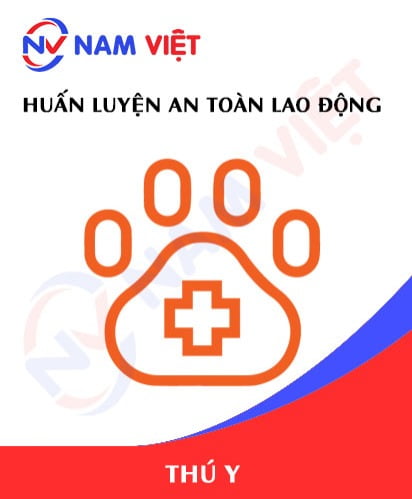
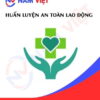
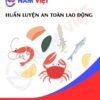



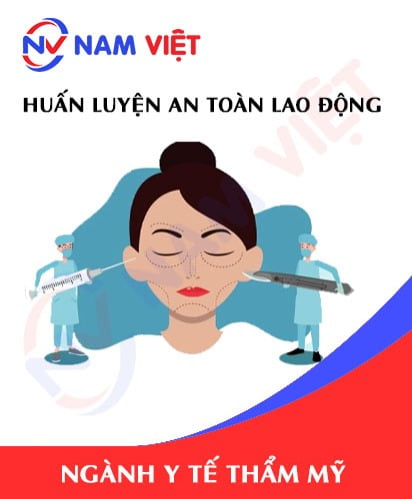
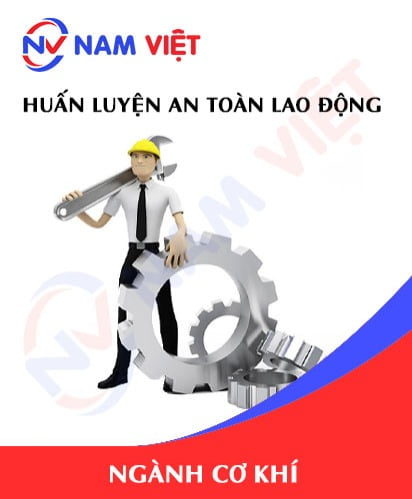
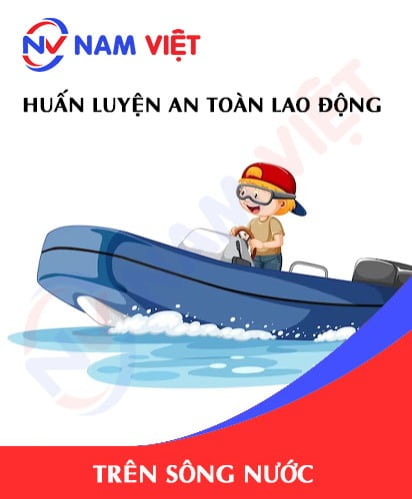
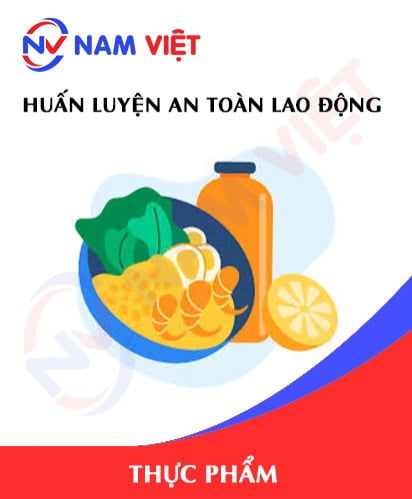
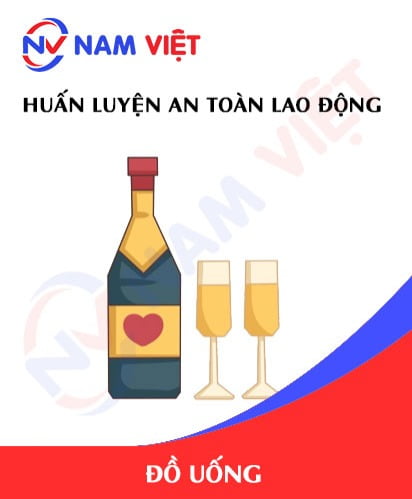
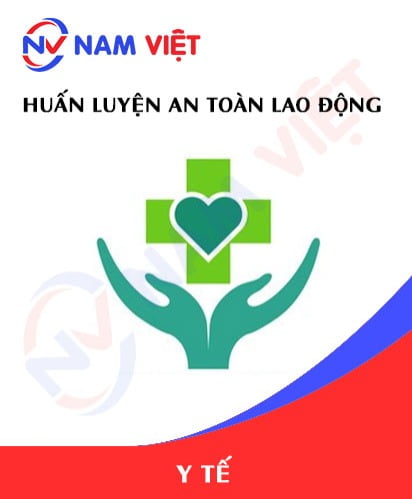
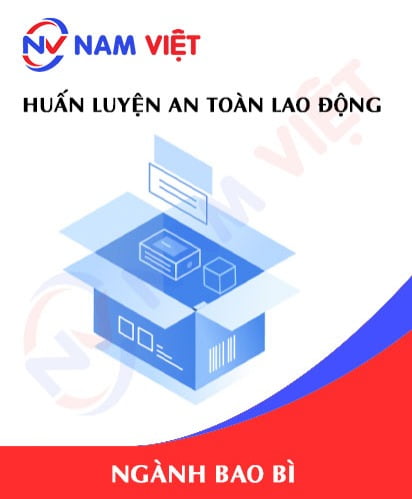
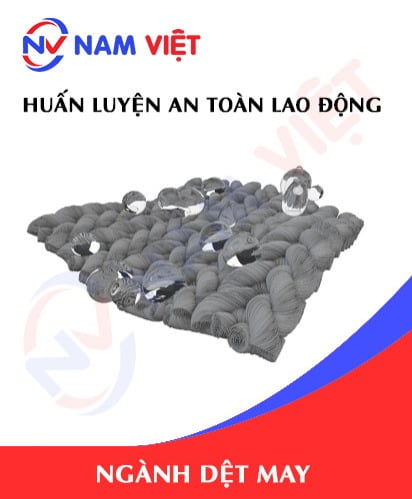
caotiensyhung.07081999
Dịch vụ tốt